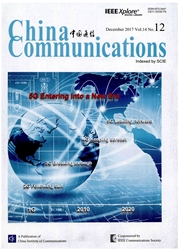

 中文摘要:
中文摘要:
The majority of existing papers about spectrum sensing have the assumption that secondary users(SUs) are stationary. However,mobility is an essential feature of mobile communications networks. In this paper,the detection performance of spectrum sensing by mobile SUs was analyzed. Three performance metrics,i.e.,detection probability,miss detection probability and false alarm probability,were thoroughly investigated. In our analysis,a critical variable was the real-time received primary user signal power by a mobile SU. Its probability distribution and mathematical expectation were analytically derived. Moreover,the three performance metrics in single-node spectrum sensing and multi-node collaborative spectrum sensing systems were also derived. Extensive simulations were performed. The results are consistent with the theoretical analysis. And it is concluded that SU mobility has a significant impact on the detection probability and the miss detection probability,but not on the false alarm probability.
 英文摘要:
英文摘要:
The majority of existing papers about spectrum sensing have the assumption that secondary users(SUs) are stationary. However,mobility is an essential feature of mobile communications networks. In this paper,the detection performance of spectrum sensing by mobile SUs was analyzed. Three performance metrics,i.e.,detection probability,miss detection probability and false alarm probability,were thoroughly investigated. In our analysis,a critical variable was the real-time received primary user signal power by a mobile SU. Its probability distribution and mathematical expectation were analytically derived. Moreover,the three performance metrics in single-node spectrum sensing and multi-node collaborative spectrum sensing systems were also derived. Extensive simulations were performed. The results are consistent with the theoretical analysis. And it is concluded that SU mobility has a significant impact on the detection probability and the miss detection probability,but not on the false alarm probability.
 同期刊论文项目
同期刊论文项目
 同项目期刊论文
同项目期刊论文
 期刊信息
期刊信息
